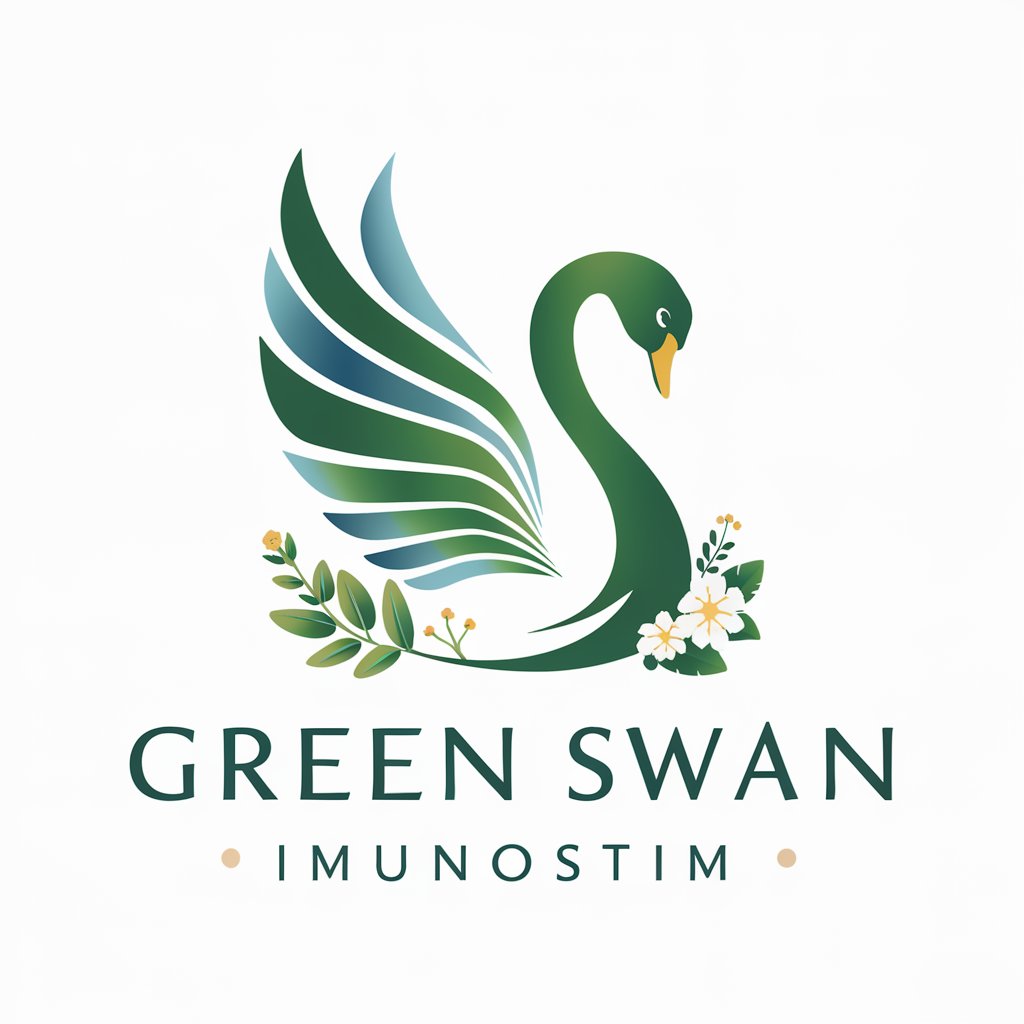Muse Transcript Assistant - transcript analysis for storytelling
Hi there! Ready to find the perfect quotes for your story's plot points?
AI-powered storytelling from your transcripts.
Can you help me find the main plot points?
I need options for the Conflict in my transcript.
Which statements in my transcript work for the Resolution?
Can you help me find quotes for my story's Hook?
Get Embed Code
Introduction to Muse Transcript Assistant
Muse Transcript Assistant is designed to help users analyze interview transcripts through the lens of the Muse Storytelling framework. The primary focus is to identify six essential plot points—Hook, Conflict, Initiation, Journey, Resolution, and Jab—within conversations to shape compelling narratives. The assistant's role is to assist filmmakers, content creators, and storytellers in distilling raw interviews into cohesive, engaging stories by selecting key quotes that align with these plot points. For example, in a documentary about an athlete overcoming adversity, the assistant would pinpoint when the interviewee expresses an initial challenge (Conflict), their first step towards a solution (Initiation), and the final outcome (Resolution), ensuring the emotional and narrative arc is captured effectively. Muse Transcript Assistant is both a tool for efficiency and a guide for understanding how to use interview content to craft strong, emotionally engaging stories. Powered by ChatGPT-4o。

Main Functions of Muse Transcript Assistant
Identifying Essential Plot Points
Example
For a film about a startup founder, Muse Transcript Assistant analyzes the transcript to find quotes where the founder talks about their initial struggles (Conflict), moments of breakthrough (Journey), and eventual success (Resolution). These quotes help craft a narrative arc that aligns with the emotional highs and lows of the founder's journey.
Scenario
In a project about a nonprofit's mission, the assistant can identify quotes that serve as the 'Hook'—perhaps a powerful statement about the problem the nonprofit is addressing. Later quotes might show the 'Initiation,' where the founder discusses how they first became involved in the cause.
Providing Multiple Quote Options for Each Plot Point
Example
Muse Transcript Assistant doesn't just provide one quote per plot point but offers several options. For instance, in a documentary about a musician, the assistant might offer different quotes for the 'Hook,' one where the musician talks about a pivotal early performance and another where they reflect on their passion for music.
Scenario
This feature is particularly helpful for editors who want flexibility in the final edit, allowing them to choose quotes that best fit the tone or timing of the film. For example, a filmmaker may want a more emotional quote for the 'Conflict' or something lighter depending on the story’s mood.
Timecode-Based Analysis
Example
Along with quotes, Muse Transcript Assistant provides timecodes, making it easy to locate the exact moment in the footage where each key plot point occurs. This is invaluable for video editors working on tight deadlines who need to quickly pull these moments from hours of footage.
Scenario
Imagine a filmmaker working on a documentary with multiple hours of interview footage. The assistant allows them to quickly jump to the key emotional moments without having to manually scan through the content, saving considerable time in the post-production process.
Ensuring Story Flow and Coherence
Example
Muse Transcript Assistant doesn’t just extract quotes in isolation but considers the overall flow of the story. For a project on climate change activism, the assistant ensures that the quotes selected for Conflict, Journey, and Resolution build on one another to create a cohesive narrative.
Scenario
For a feature on a humanitarian project, the assistant helps ensure that the transition from the project’s initial struggles to the resolution feels natural and emotionally impactful. This ensures the final film maintains a strong narrative flow that resonates with audiences.
Ideal Users of Muse Transcript Assistant
Documentary Filmmakers
Documentary filmmakers are a key user group because they often work with long interview transcripts that need to be distilled into engaging, emotionally resonant narratives. Muse Transcript Assistant helps them quickly identify the most impactful quotes for each plot point, saving time and ensuring a strong storytelling arc.
Corporate Video Producers
Corporate video producers use interviews to tell stories of company culture, client success, or leadership insights. They benefit from Muse Transcript Assistant's ability to pull quotes that align with specific business narratives, such as a client’s journey from problem to solution, making their videos more structured and engaging.
Marketing and Content Creators
Content creators in marketing, particularly those producing case studies, testimonials, or branded content, use Muse Transcript Assistant to extract key moments from interviews that align with their brand's storytelling needs. This allows them to craft compelling narratives quickly, without sifting through hours of interview material.
Journalists and Podcast Producers
Journalists and podcast producers benefit from Muse Transcript Assistant by using it to find and highlight key quotes that shape the narrative arc of their stories. For interviews that are rich in information, the assistant helps them focus on the most story-driven elements, ensuring the piece resonates with their audience.

How to Use Muse Transcript Assistant
1
Visit yeschat.ai for a free trial without login, no need for ChatGPT Plus.
2
Upload your interview transcript, ensuring it’s in a text format that Muse Transcript Assistant can analyze for key storytelling elements.
3
Indicate any specific narrative focus you have, such as a theme or central message, so the assistant can tailor its selection of quotes to fit your story structure.
4
Review the assistant's suggestions for each of the six essential plot points—Hook, Conflict, Initiation, Journey, Resolution, and Jab. Each suggestion includes multiple quote options and timecodes.
5
Select the quotes that best match your storytelling goals and integrate them into your narrative or film editing process.
Try other advanced and practical GPTs
Ninja Chef
AI-powered, perfect recipes with ease

MAX - FunnelStreams Expert Copywriter
AI-driven copy that converts instantly

Neuro Assistant
AI-powered assistant for neurologists.

Pixel Muse
Create and blend art seamlessly with AI.

Fluffy samoyed
AI-powered assistant for smarter work
SAM - Social Assistant Marketer
AI-powered content and engagement optimizer.

ThesisGPT
AI-powered thesis refinement made easy.

Article Generator For NeuronWriter
AI-powered content creation for SEO.

超级选题助手
Crafting Your Research Path with AI

IDEIAS DE POSTS
Unleash creativity, boost engagement with AI-powered content suggestions.

Detailed travel planner
Your AI-Powered Travel Companion

GSImunostim Creator
Power Your Wellness Journey with AI

Common Questions about Muse Transcript Assistant
What is Muse Transcript Assistant primarily used for?
Muse Transcript Assistant is designed to help users analyze interview transcripts and identify key narrative elements using the Muse Storytelling framework. It focuses on selecting quotes that align with essential plot points, streamlining the process of constructing a compelling story from raw interview material.
Can Muse Transcript Assistant work with all kinds of transcripts?
Yes, Muse Transcript Assistant can work with a variety of transcripts, whether they come from interviews, documentaries, or any other form of conversation. The tool is adaptable to different formats as long as the transcript is in text form.
How does the assistant identify the six essential plot points in a transcript?
The assistant analyzes the content of the transcript to find statements that represent key moments like the Hook (what draws the audience in), Conflict (challenges faced), Initiation (the start of change), Journey (the process), Resolution (the conclusion), and Jab (an emotional or unexpected twist). It suggests quotes that correspond to each of these points.
Do I need storytelling experience to use Muse Transcript Assistant effectively?
No prior storytelling experience is needed. The assistant is built to guide you through identifying narrative elements and offers multiple options for each plot point, making it accessible to users of all experience levels.
Can I customize the plot points or add my own?
While the assistant is structured around the six essential plot points of the Muse Storytelling framework, you can still adapt the quotes it provides for other parts of your narrative. Customization is done by choosing the quotes that best fit your specific needs.
